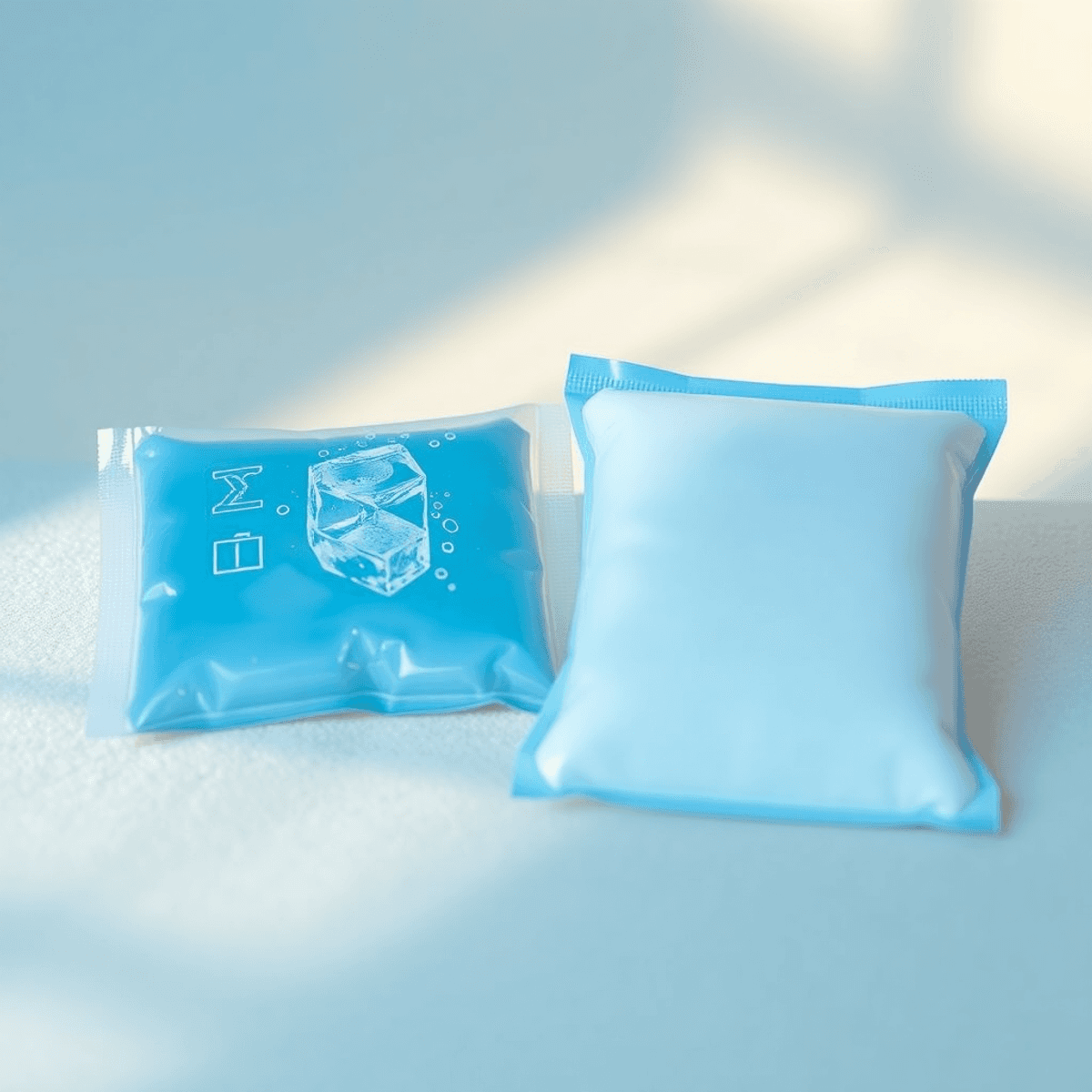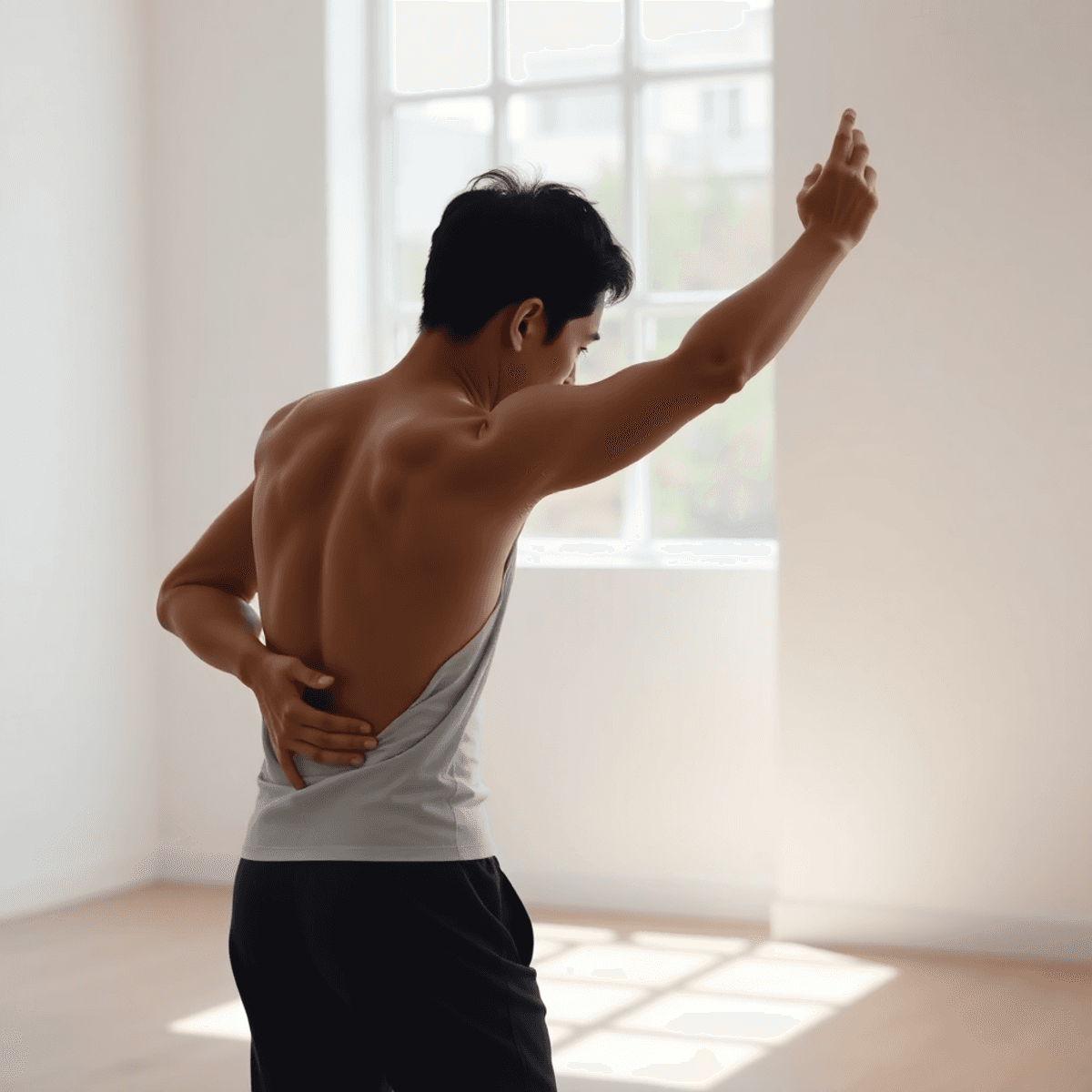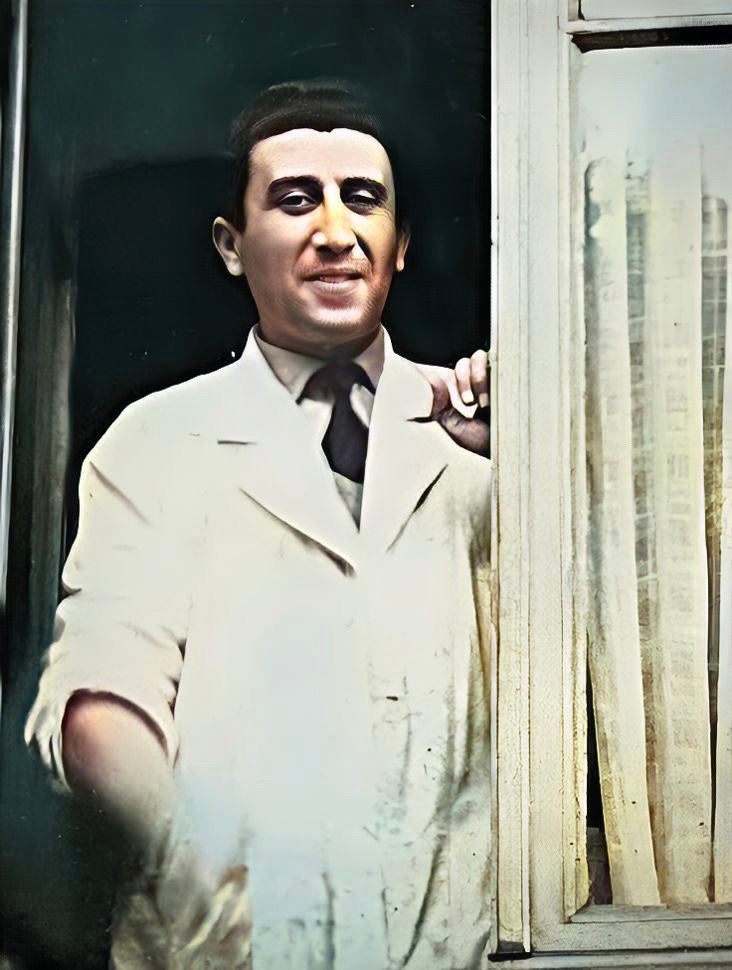5 Exercises to Alleviate Low Back Strain: Expert Tips

Introduction
Low back strain is a common problem that affects many people. It often happens due to small accidents, incorrect movements, or even not moving enough. It's important to recognise the symptoms—such as pain, stiffness, and swelling—in order to treat this condition effectively. Factors like lack of exercise, being overweight, and smoking can make the problem worse.
Exercise is crucial for recovery. Doing specific physical activities helps reduce back strain symptoms and promotes healing by improving flexibility, strength, and blood flow. Unlike staying in bed for a long time, which can slow down recovery, structured exercises encourage muscle repair and prevent stiffness.
Experts recommend five specific exercises to help relieve low back strain:
- Abdominal Tuck: A warm-up exercise that improves flexibility and blood flow.
- Core Marching: Strengthens core muscles to stabilise the spine.
- Single Knee to Chest Stretch: Targets the gluteal muscles for greater flexibility.
- Child's Pose: A restorative yoga pose that eases tension in the lower back.
- Bird Dog Hip Extension: Promotes coordination between spinal stabilisers and gluteal muscles.
These exercises provide a comprehensive approach to managing low back strain effectively.
Understanding Low Back Strain
Low back strain is often the result of minor accidents or incorrect movements. These incidents can include sudden twists, lifting heavy objects without proper form, or even simple activities like bending down incorrectly. Such actions can place undue stress on the muscles and ligaments in the lower back, leading to injury.
Several factors increase the risk of developing low back pain:
- Lack of exercise: A sedentary lifestyle contributes significantly to muscle weakness and poor posture, both of which can lead to back strain.
- Obesity: Carrying extra body weight places additional pressure on the spine and surrounding muscles.
- Smoking: This habit impairs blood flow and reduces oxygen supply to spinal tissues, making them more prone to injury.
Recognising symptoms early is crucial in managing low back strain effectively. Common signs include:
- Pain: Often sharp or aching, this discomfort is typically felt in the lower back area.
- Stiffness and loss of motion: Difficulty in bending, stretching, or moving normally due to tightness in the muscles.
- Swelling: Inflammation around the affected area may occur, sometimes accompanied by visible puffiness.
- Muscle spasms: Sudden, involuntary contractions of muscles can lead to additional pain and difficulty in movement.
Awareness of these causes, risk factors, and symptoms provides a foundation for understanding low back strain. This knowledge empowers you to take proactive steps in both prevention and management.
Diagnosis of Back Strain
Diagnosing a low back strain involves a thorough assessment by healthcare professionals, who primarily rely on symptoms and injury history. When you visit a doctor for back pain, they will start by asking detailed questions about how the injury occurred and the nature of your symptoms. Key symptoms like pain, stiffness, swelling, and difficulty in movement are crucial indicators that help pinpoint the presence of a back strain.
A physical examination follows where the doctor might ask you to perform certain movements to evaluate your range of motion and identify areas of tenderness or muscle spasms. This hands-on evaluation helps differentiate a simple strain from potentially more serious conditions.
In some cases, imaging tests such as X-rays or MRIs may be necessary. These tests play a key role in excluding other conditions that can mimic a low back strain, such as fractures or spinal disc issues. While x-rays offer insights into bone-related problems, MRIs provide detailed images of soft tissues including muscles and ligaments. By ruling out these more serious conditions, healthcare providers can confirm a diagnosis of low back strain and tailor an appropriate treatment plan for effective recovery.
Treatment Options for Low Back Strain
Managing low back strain effectively requires a multifaceted approach.
Medications
Medications play a crucial role; over-the-counter (OTC) options such as ibuprofen are commonly recommended for reducing pain and inflammation.
Dietary Supplements
Dietary supplements, like turmeric, may offer additional benefits by helping to decrease swelling and promote healing.
Ice or Heat Therapy
Applying ice or heat during the acute phase can significantly alleviate discomfort. Ice is often used initially to numb sharp pain and reduce swelling, while heat therapy can be beneficial in soothing ongoing stiffness after the initial inflammation subsides.
Massage Therapy
Massage therapy presents another valuable treatment for low back strain. Professional massages can facilitate recovery by improving blood circulation and relaxing tense muscles, thereby easing pain and enhancing flexibility. If professional services are unavailable, massage from a trusted friend or family member can still provide relief.
Pain Relief Exercises
Incorporating pain relief exercises into your routine is essential in fostering long-term recovery and preventing further injury.
Expert Recommendations for Exercises to Alleviate Low Back Strain
1. Warm-Up Exercise: Abdominal Tuck
The abdominal tuck exercise serves as an effective warm-up movement prior to engaging in more intense activities or workouts. This exercise is crucial in preparing the body, specifically targeting the deep abdominal muscles and promoting proper spinal alignment.
How to Perform the Abdominal Tuck:
- Starting Position: Lie on your back with your knees bent and feet flat on the floor. Place your hands on your lower abdomen.
- Engage Core Muscles: Gently tilt your pelvis towards your ribcage, flattening the curve in your lower back against the floor. You should feel a slight tightening in your abdominal muscles.
- Hold and Release: Maintain this position for a few seconds, then relax. Repeat this movement for 10-15 repetitions.
Benefits of the Abdominal Tuck Exercise:
- Activation of Deep Abdominal Muscles: By focusing on engaging these core muscles, you aid in stabilising the spine, which is essential for reducing low back pain.
- Improved Spinal Alignment: Regular practice helps in aligning the spine properly, which can prevent future strains and discomfort.
- Enhanced Flexibility: This movement promotes flexibility by gently mobilising the lumbar region, preparing your body for subsequent exercises.
Incorporating the abdominal tuck into your routine can significantly contribute to alleviating low back strain. As a preparatory exercise, it ensures that your core is adequately activated, providing a solid foundation for additional core stability exercises aimed at reducing low back pain.
Encouraging proper technique and consistency in practising this exercise enhances its effectiveness and supports long-term back health. Engaging with these types of core stability exercises not only reduces discomfort but also fortifies overall resilience against potential injuries.
Furthermore, it's essential to complement these exercises with a healthy lifestyle. One aspect that can greatly aid in recovery and overall health is nutrition, particularly through the use of all-natural ingredients. Incorporating such ingredients into your diet can provide additional support to your body's healing process and overall well-being.
2. Core Stability Exercise: Core Marching
Core stability exercises are vital for reducing low back pain and enhancing overall spinal health. Among these, the core marching exercise stands out as an effective method to strengthen the muscles that stabilise the spine.
Core Marching Exercise:
- Setup: Lay on your back with knees bent and feet flat on the floor. Keep your arms at your sides.
- Movement: Engage your abdominal muscles by drawing in your navel towards your spine. Lift one leg until your knee points upwards, keeping the other foot planted. Alternate legs in a controlled manner, maintaining stability in your core.
This exercise is particularly beneficial as it targets the deep core muscles essential for maintaining a stable spinal position. By regularly practising core marching, you help alleviate discomfort in the lower back region, contributing to long-term relief from lower back strain injuries.
Performing this exercise at home requires minimal equipment and fits seamlessly within a routine aimed at enhancing core stability, flexibility, and muscle strength.
3. Stretching Exercise: Single Knee to Chest Stretch
This stretching exercise for back strain relief focuses on increasing flexibility and easing tension in the lower back region. Safe and simple to perform at home, it complements other expert-recommended exercises like the abdominal tuck and core stability exercises for reducing low back pain.
Instructions:
- Starting Position: Lie flat on your back on a comfortable surface, such as a yoga mat. Keep your legs extended and your arms resting by your sides.
- Performing the Stretch:
- Bend one knee and slowly pull it towards your chest using both hands.
- Hold the position for 15-30 seconds, feeling a gentle stretch in your gluteal muscles and lower back fascia.
- Release your leg back to the starting position and switch to the opposite knee.
- Repetition: Aim to repeat this stretch 3-5 times on each leg, ensuring you maintain a relaxed breathing pattern throughout.
Regular practice of this stretch helps promote relaxation and enhances flexibility, aiding in the alleviation of low back strain symptoms.
4. Yoga Pose: Child's Pose for Back Pain Relief
The child's pose is a restorative yoga posture known for its ability to offer gentle traction to the spine while elongating the lumbar extensors. This simple yet effective exercise can be particularly beneficial for those experiencing chronic or recurrent low back pain. By regularly practising this pose, you can help reduce tension and enhance overall mobility in your lower back area.
Technique
- Begin by kneeling on the floor with your big toes touching and knees hip-width apart.
- Sit back onto your heels and extend your arms forward, resting your forehead on the mat.
- Allow your body to relax into the position, feeling a gentle stretch along your spine.
Benefits
The child's pose not only stretches the lumbar extensors but also promotes relaxation and flexibility. It's a cornerstone among core stability exercises for reducing low back pain, complementing movements like the abdominal tuck exercise. This position offers a safe and accessible way to ease discomfort without requiring any special equipment, making it ideal for home practice.
Incorporating this yoga pose alongside other targeted exercises such as core stability and abdominal tuck routines provides a comprehensive approach to alleviating low back strain injuries. However, if you're looking for additional methods to manage pain effectively, consider exploring some natural and effective ways to relieve and manage pain offered by 1936 Original. Their premium products are designed to provide lasting relief and improve overall well-being.
Moreover, if you are specifically dealing with back pain, 1936 Original also offers a range of products designed to help relieve back, joint and muscle pain while reducing inflammation.
5. Stabilisation Exercise: Bird Dog Hip Extension
The Bird Dog Hip Extension is a powerful lower back stabilisation exercise that helps reduce low back pain by focusing on core stability. This exercise, part of the expert-recommended 5 Exercises for Low Back (Muscle) Strain, targets essential areas such as muscle strength and flexibility. It's safe to perform at home with minimal equipment, making it accessible to everyone.
Step-by-step Guide:
- Start Position: Begin on all fours, ensuring your hands are directly under your shoulders and knees under your hips.
- Engage Core Muscles: Tighten your abdominal muscles to maintain a neutral spine.
- Extend Opposite Limb: Extend your right arm forward while simultaneously extending your left leg backwards, keeping both parallel to the floor.
- Maintain Balance: Hold this position briefly, focusing on engaging the deep stabilisers of the spine and gluteal muscles.
- Return to Start: Bring your arm and leg back to the starting position.
- Switch Sides: Repeat the movement with your left arm and right leg.
Practising this functional movement enhances coordination between muscle groups, promoting optimal postural control during daily activities.
Recovery and Rehabilitation Tips for Low Back Strain Injuries
Continuing movement is crucial after experiencing a low back strain injury. Prolonged bed rest or inactivity can make the problem worse. Movement encourages blood flow, which is vital for healing, while also reducing stiffness and muscle spasms associated with low back strains.
Be Careful with Your Spine
However, it's important to avoid putting too much pressure on your spine in the early stages of recovery. You should gradually increase your activity level based on a rehabilitation protocol created by healthcare professionals like physiotherapists. These experts understand the intricacies of back strain injuries and can design a plan tailored to your specific needs.
Overcoming Fear of Movement
Psychological factors play a significant role in the recovery process. Fear avoidance beliefs, where individuals are reluctant to engage in activities due to fear of re-injury, can slow down progress. Doing the recommended 5 Exercises for Low Back (Muscle) Strain: Expert Recommendations helps build confidence in movement and reduces anxiety about potential pain or damage.
Holistic Healing
Incorporating natural health practices into your recovery regimen can further enhance healing. These methods often focus on holistic approaches that leverage the body's innate ability to heal itself, providing additional support during rehabilitation.
Emphasising both physical and mental aspects of recovery ensures a comprehensive approach. Staying active not only aids physical healing but also supports mental well-being, promoting long-term positive outcomes from low back strain injuries.
FAQs
What is low back strain?
Low back strain is a common problem that affects many people, often resulting from minor accidents or improper lifting techniques. It involves damage to the muscles and ligaments in the lower back.
How can I diagnose a low back strain?
Diagnosing a low back strain involves a thorough assessment by a healthcare professional, which may include physical examinations and possibly imaging tests to rule out other conditions.
What are some effective treatments for low back strain?
Managing low back strain effectively requires a multifaceted approach, including medications (OTC options), dietary supplements like turmeric, ice or heat therapy, massage therapy, and incorporating pain relief exercises into your routine.
What is the abdominal tuck exercise and how do I perform it?
The abdominal tuck exercise serves as an effective warm-up movement. To perform it, lie on your back with your knees bent and feet flat on the floor. Focus on engaging your deep abdominal muscles by tucking your pelvis slightly while maintaining your back's natural curve.
How does Child's Pose help with low back pain relief?
Child's pose is a restorative yoga posture that stretches the lumbar extensors and promotes relaxation. To perform it, kneel on the floor with your big toes touching and sit back on your heels while reaching your arms forward and lowering your torso between your thighs.
What are recovery tips for low back strain injuries?
Continuing movement is crucial after experiencing a low back strain. It's important to avoid putting too much pressure on your spine, overcome any fear of movement, and consider incorporating holistic healing practices into your recovery routine.












